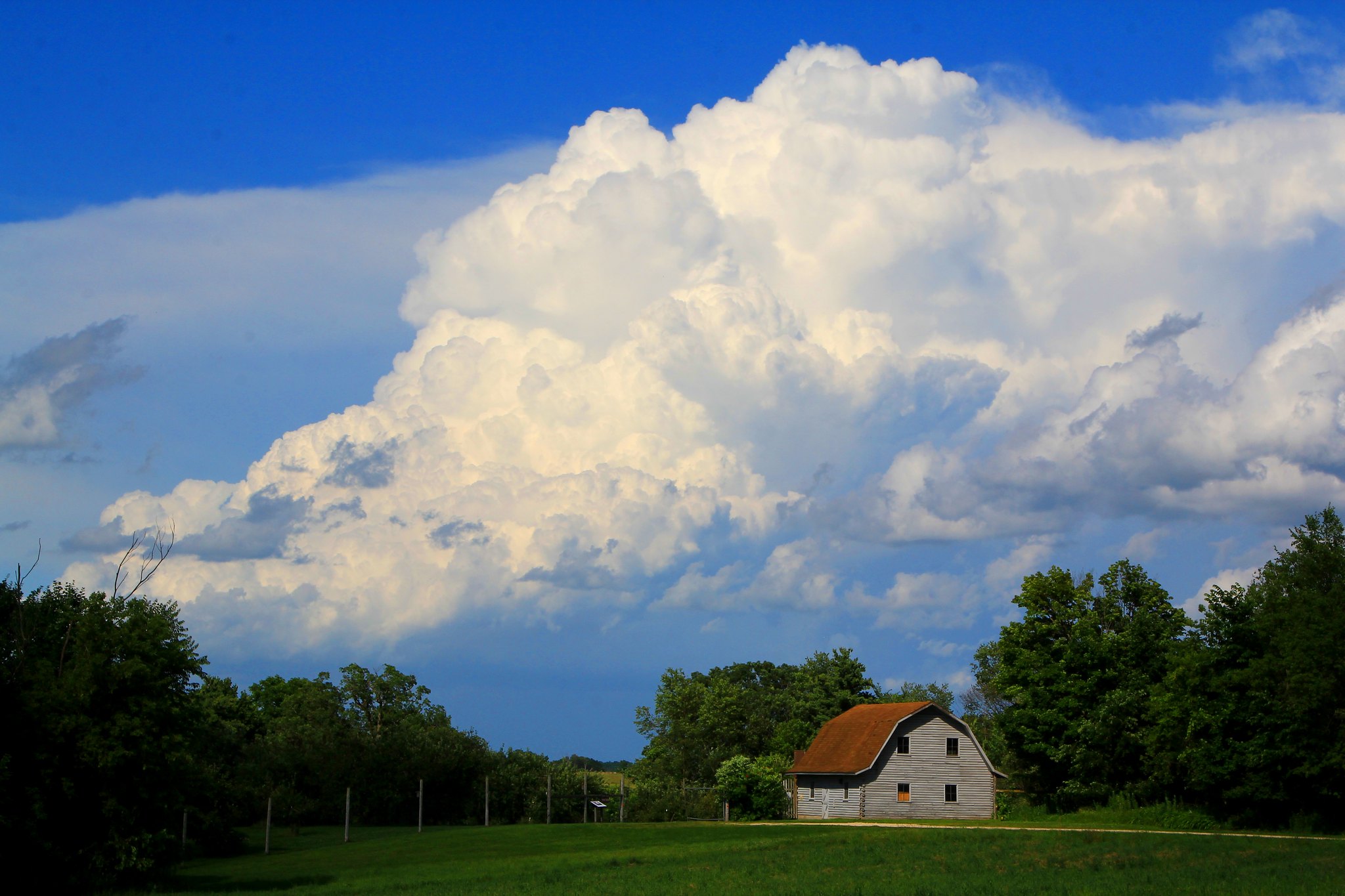Acorn Crew: Clouds
By Clara Wodny on August 26, 2024 in Blog

Cumulus clouds form over an Iowa barn, photo by Larry Reis
Did you know there are more than 10 different types of clouds? Some are thin and wispy, some are big and fluffy, some decorate the sky on sunny days and others are a sure sign of rain.
Why don’t you step outside and see if you can spot any today. While you look, let’s explore how clouds are formed!
What are clouds made of?
You might already know that clouds are made up of small water droplets and ice crystals that are light enough to float in the air. But did you know that most clouds contain dust as well?
The air always contains water vapor, the gas form of air, which is invisible. When air rises into the atmosphere it gets cooler, and when water vapor cools, it condenses and forms small water droplets. Water vapor is more likely to condense into water droplets when it has something else to grab onto- which is where the dust comes in. The particles of dust that water vapor grabs onto are called condensation nuclei. When enough water vapor condenses on condensation nuclei to form droplets, a cloud is born!
How do clouds get their names?
Clouds are sorted into different categories based on how they form and how high they are in the sky. Clouds can develop vertically, formed by the condensation of rising air, or they can be layered, formed by condensation of air without vertical movement. There are four classifications for height—high (20,000 ft or above), middle (6,500-20,000 ft), Low (50- 6,5000 ft)—and vertical development. The base of vertical development clouds always occurs in a low cloud range (below 6,000 ft) but they can be very tall, sometimes extending over 50,000 feet in the air.
A few of the most common cloud terms include “Cirrus”, which means curly, featherlike, and high; “Stratus”, which means layered or sheet-like; “Cumulus”, which means puffy and formed vertically; “Nimbus”, which means dark and rainy; and “Alto”, which refers to clouds that form in the middle range of the sky. These terms each refer to a different type of cloud, but they can also be combined to describe even more variations. For example, a “Nimbostratus” cloud would be flat, layered, and have the potential for rain.
What kinds of clouds do you see?
Next time you see clouds, pay attention to their shapes. Maybe you can match them to one of the terms we just learned! Then, use our printable activity to draw what you see and compare them with the pictures. Happy cloud watching!
The Acorn Crew is INHF's initiative to get children and families outdoors! Find more self-guided activities for you and your family and links to other resources to get outside together through our Acorn Crew page.